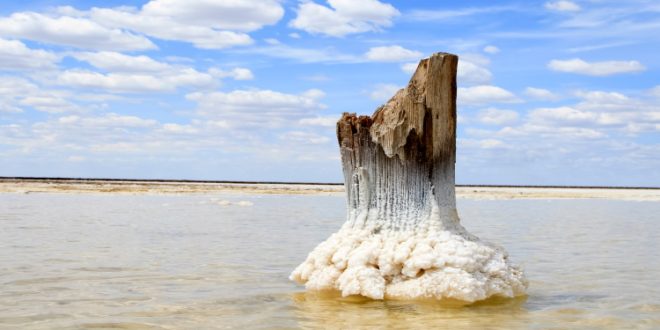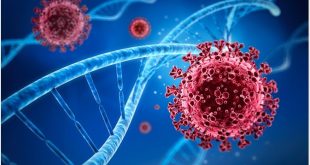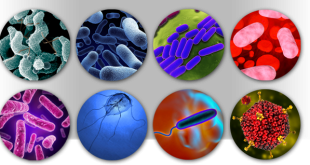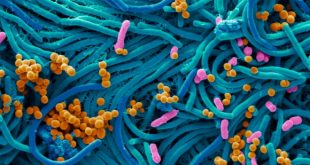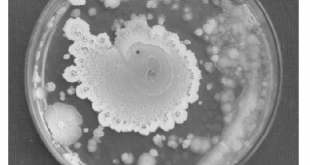Archaea are single celled organisms without a nucleus and with distinct structural, physiological and evolutionary characteristics. They inhabit a huge variety of habitats, including extreme environments. Archaea form one of the three domains of life; the others are bacteria and eukaryotes.
The archaea are clearly recognizable as a unique and interesting group of organisms for many significant reasons. They have different molecular properties that clearly distinguish them from bacteria and eucarya, and evolutionary studies highlight the fundamental role archaea have played in shaping all of life on earth. The combined effects of its evolutionary role and its ability to thrive in environmental extremes have broadened the horizons of the astrobiology community in search of extraterrestrial life.
These microorganisms do not have a nucleus and are therefore prokaryotic. Archaea were originally classified as bacteria and were given the name archaebacteria, but that term was no longer used.
Well-known evolutionary biologist and geologist Stephen J. Gould said that the earliest fossil could possibly have species of archaea.
Many microbiologists believe that the ancestors of today’s species could represent a type of organism that first inhabited planet Earth when it was a young and warm place.
General Characteristics
- Archaebacteria are anaerobes; might be obligate or facultative.
- In few cases they might be aerobic, chemolithotrophic or chemoorganotrophic.
- Cell membrane are composed of lipid and cell wall composed of pseudomurein.
- They are very diverse, both in morphology and physiology.
- They can be spherical, rod-shaped, spiral, lobed, plate-shaped, irregularly shaped, or pleomorphic
- Some are single cells, while others form filaments or aggregates.
- Diameter between 0.1> 15 µm and filaments can reach 200 µm in length.
- Multiplication occurs asexually by binary fission, budding, fragmentation or other mechanisms.
- Archaea are often found in extreme aquatic and terrestrial habitats
- Their gene transcription is unique.
- They contain plasmid and it is consist of antibiotic resistance.
- Their movement is performed by flagella.
- Interactions between archaea and other life forms are symbiotic or commensal, as archaea do not pose a pathogenic threat to other organisms.
They might be gram positive or gam negetive.
Nice to know
- Archaebacteria don’t contain chlorophyll pigment, so can’t photosynthesize.
- Unlike bacteria, they do not produce spores.
- 20% of all microbial organisms living in the ocean are archaea.
- In 1978 Carl Woese discovered archaea.
- Archaebacteria can only reproduce asexually.
Classification
Archaeal classification is based on their phylogenetic relationship. The major types of Archaea are-
- Crenarchaeota
- Euryarchaeota
- Korarchaeota
- Thaumarchaeota
- Nanoarchaeota
1. Crenarchaeota
Crenarchaeotes are characterized as thermophilic where some of them are acidophilic. Basically they occurs in acidic thermal spring and submarine hydrothermal vents. Their temperature for growth might exceed 100 °C. Question may arise here why they don’t boil in such a high temperature? The answer is hydrostatic pressure.
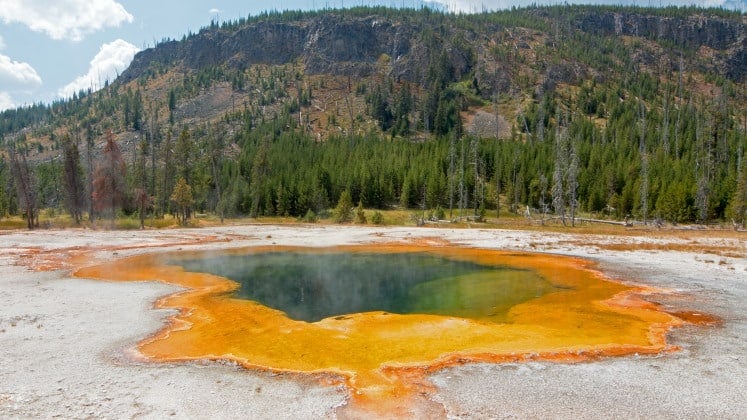
Several non-thermophilic crenarchaeota related to hyperthermophilic species inhabit aquatic and terrestrial environments. Many hyperthermophiles are chemilithotrophic autotrophs and since no phototroph can survive such temperatures, these organisms are the main sloe producers in these habitats.
2. Euryarchaeota
They are phylogenetically very diverse including physiologically quite distinct groups like the strictly anaerobic methanogens, extreme halophiles i.e. halobacteria and extreme acidophiles like thermoplasmatales.
Euryarchaeotes can survive in extreme alkaline condition and are mainly methanogen. They might also be extreme halophiles and hyperthermophiles.

Good to know
An organism is considered an extreme halophile; if it needs at least 1.5 M (9%) NaCl to grow. Most extreme halophilic species require 24 M NaCl (12.23%) for optimal growth.
In physiological contrasts, two groups are notable here-
• Methanogens: Whose metabolism produces methane.
• Extremely halophilic halobacteria: Grows at extreme salt concentration.
3. Korarchaeota
Korarchaeotes are believed to be the oldest surviving organisms on earth. Their genome seems to be a hybrid of crenarchaeal and euryarchaeal genes and it is a paradox if this is the result of horizontal gene transfer or evidence of a common ancestor. They are completely obligate anaerobes and and grow heterotrophically using peptide and amino acid degradation pathways.
4. Thaumarchaeota
Formerly they were considered as Crenarchaeota. They have been estimated to represent nearly 20% of prokaryotic cells in the water column.
The strain was proposed in 2008 based on phylogenetic data. Most of the so far identified organisms of this line are chemolytoautotrophic.They are the dominant archaea in most soil systems where they constitute up to 5% of total prokaryotes.
They can play an important role in biogeochemical cycles such as the nitrogen cycle and the carbon cycle.
5. Nanoarchaeota
They are the symbiotic group of archaea that engage in close interspecies associations with different archaeal hosts.
They are very small in size and depends upon other organisms for living. Cells of Nanoarchaeotes are small coccoids that might live as parasites, or possibly as symbionts, of the crenarchaeota ignicoccus.
Importance
Archaea plays vital role in many cases including our body itself.
- Archaea are a source of enzymes now-a-days.
Archaea, specially extermophilic archaea, are a great source of enzymes that work under these harsh conditions. These enzymes have been found in various applications. For example, thermostable DNA polymerase such as Pyrococcusfuriosus pfu DNA polymerase enabled the polymerase chain reaction to be used in research as a simple and fast technique for cloning DNA. It’s a revolutionary incident in molecular biology.
- Ammonia oxidation and nitrogen fixation is carried out by archaea.
Untill This discovery, it was assumed that the first step of the nitrogen cycle is carried out by bacterial autotrophs. But Recent studies suggest that the Archaea provide the major routes for ammonia oxidation in the environment. The members of the Phylum thaumarchaeota are ammonia-oxidizing arcaea (AOA), means superficially the thaumarchaeotes oxidize amonia.
- Methanogenesis and aerobic methane oxidation is performed by archaeal species.
Methanogens play an important role in decomposition of complex organic materials. A major amount of methane gas is produced by this process.We all know about the uses of methane gas. It is a part and parcel of our daily life as it is used for various purposes including cooking and lightening. So, this essential gas is carried out by archaea.
- Archaea are been utilized for bioleaching purpose.
Bioleachng is performed by archaea along with the bacteria. Bioleaching means the extraction of metals from their ore of several applications in biohydrometallurgy. Previously it was believed that bioleaching is mostly occured by bacteria but recent studies proved that thermophilic archaea play an important role in bioleaching.
- Sulphur-oxidizing pathway have also been best identified in archaea.
- Organisms appear in the early earth believed to be under the group archaea.
- It plays an important role in cycling nutrients.
- They produce biomass from the waste.
- They can be used for bioremediation of a polluted site.
Conclusion
The archaeal study confirmed that archaea will exhibit a phenotypic diversity at least comparable to that of bacteria, and that archaea will be characterized by unique properties at the molecular level. They play a special role in bioremediation and are present in the human host. Given the extreme climatic nature of many archaea, the gradual survival strategies of these microorganisms appear considerable.
References
- Archaea- molecular and cellular biology edited by Ricardo Cavicchioli
- Archaea: an all-out study/researchgate.net
- Major players on the microbial stage: Why archaea are important?/researchgte.net
- Crenarchaeota/sciencedirect.com
- Euryarchaeota/sciencedirect.com
- Korarchaeota/sciencedirect.com
- Thumarchaeota/sciencedirect.con
- Nanoarchaeota/sciencedirect.com
- Britannica.com
- Wikipedia
 Plantlet The Blogging Platform of Department of Botany, University of Dhaka
Plantlet The Blogging Platform of Department of Botany, University of Dhaka
